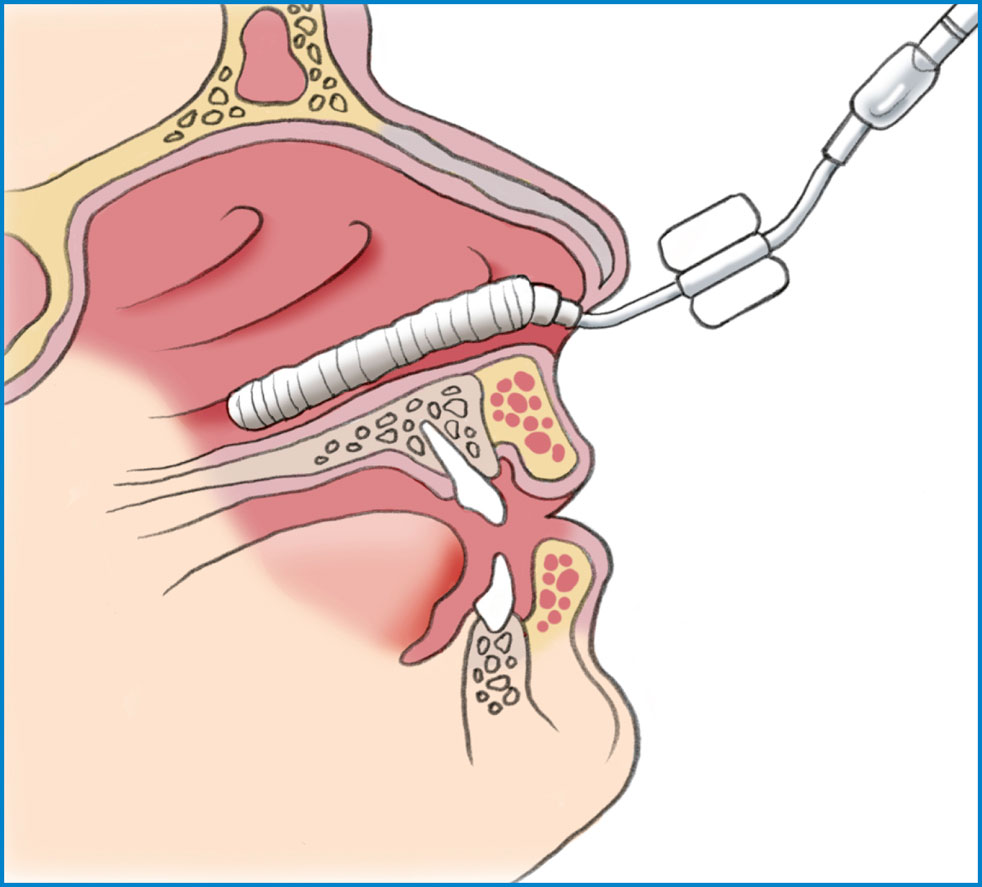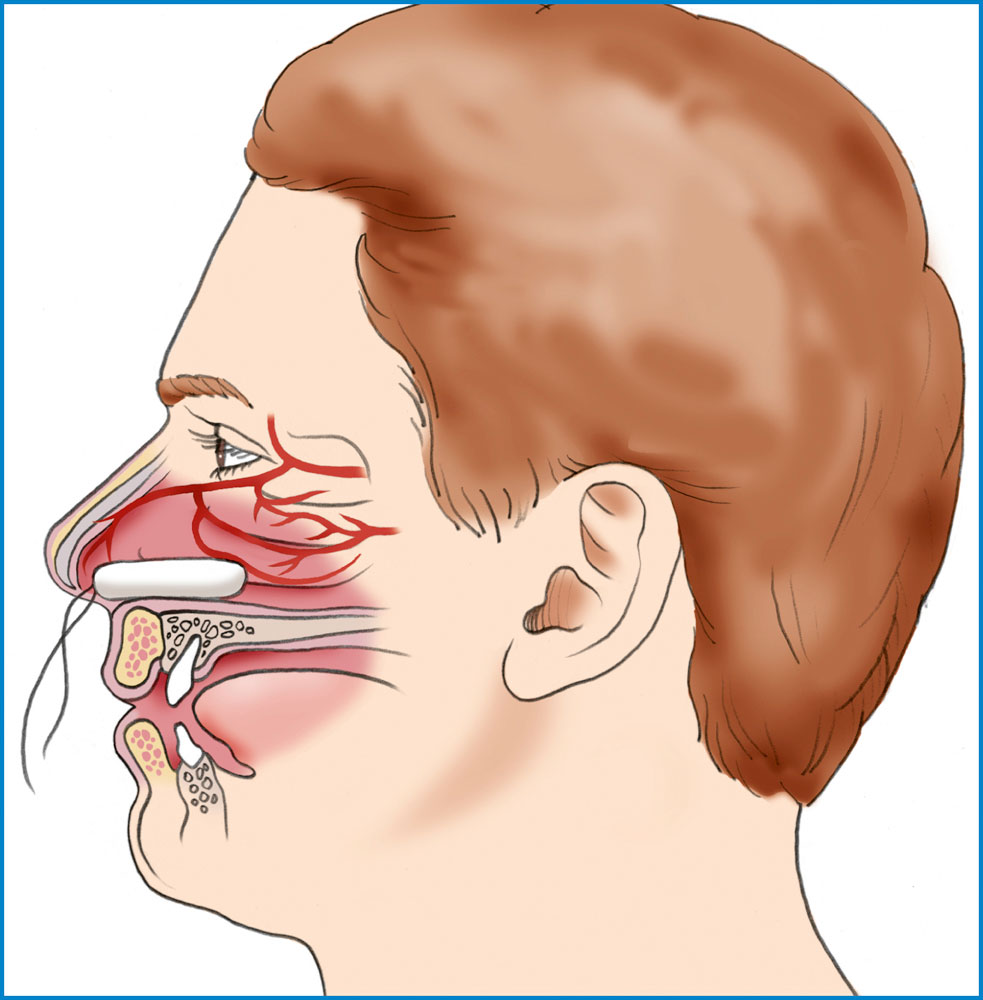| Inserting anterior nasal packing | |
If bleeding persists despite chemical cautery, assist the practitioner with insertion of nasal packing to stop the bleeding. You may use a commercially available inflatable balloon or nasal tampon to pack the area. Inflatable Balloon Device An inflatable balloon device has a balloon that’s coated with a carboxymethylcellulose hydrocolloid compound, which acts as a platelet aggregator. The substance also creates a lubricant when it comes in contact with water to ease insertion. After soaking the device in sterile water, the practitioner inserts the device along the superior aspect of the hard palate until the fabric ring is well into the naris (as shown below). Then, using a 20-mL syringe, the practitioner inflates the balloon until the pilot cuff becomes rounded and feels firm when squeezed. 27
Nasal Tampon To insert a nasal tampon, after coating the tampon with water-soluble lubricant or antibiotic ointment, as prescribed, the practitioner grabs the string end with gloved fingers or forceps. The practitioner inserts the tampon gently and quickly along the floor of the nasal cavity until the string reaches the naris (as shown below).3
|

